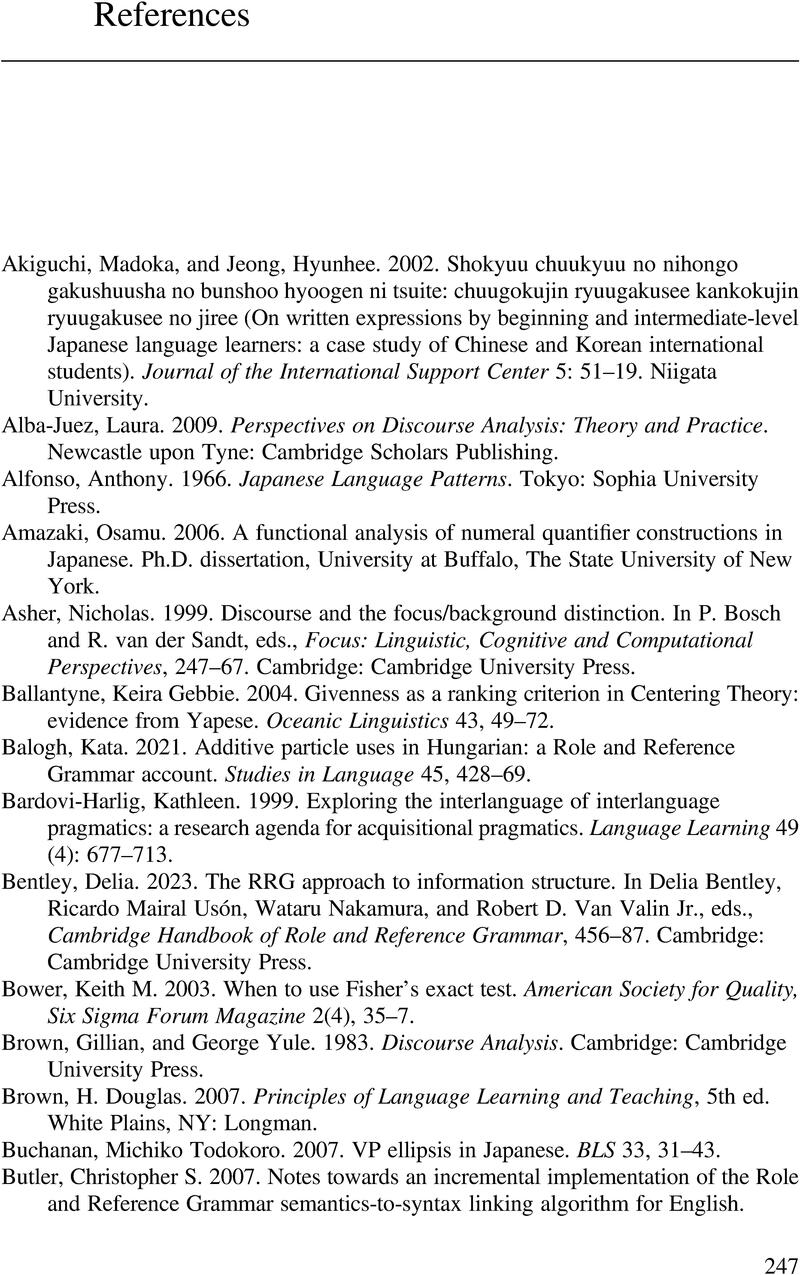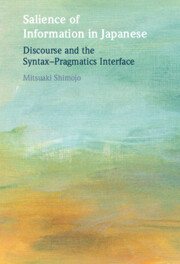Book contents
- Salience of Information in Japanese
- Salience of Information in Japanese
- Copyright page
- Contents
- Figures
- Tables
- Preface
- Abbreviations
- Notes on Transcriptions
- 1 Introduction
- 2 Background
- 3 Backward-Looking Salience and Argument Forms
- 4 Backward-Looking Salience and Argument Forms
- 5 Predicate-Less Constructions
- 6 Forward-Looking Non-salience and Argument Forms
- 7 Concluding Remarks
- References
- Index
- References
References
Published online by Cambridge University Press: 28 March 2024
- Salience of Information in Japanese
- Salience of Information in Japanese
- Copyright page
- Contents
- Figures
- Tables
- Preface
- Abbreviations
- Notes on Transcriptions
- 1 Introduction
- 2 Background
- 3 Backward-Looking Salience and Argument Forms
- 4 Backward-Looking Salience and Argument Forms
- 5 Predicate-Less Constructions
- 6 Forward-Looking Non-salience and Argument Forms
- 7 Concluding Remarks
- References
- Index
- References
Summary

- Type
- Chapter
- Information
- Salience of Information in JapaneseDiscourse and the Syntax–Pragmatics Interface, pp. 247 - 260Publisher: Cambridge University PressPrint publication year: 2024

